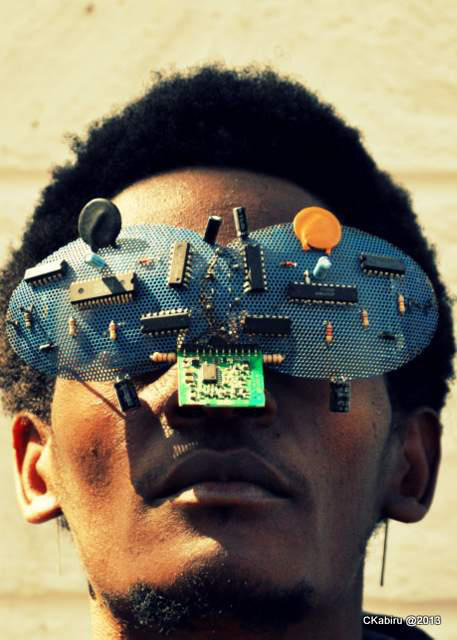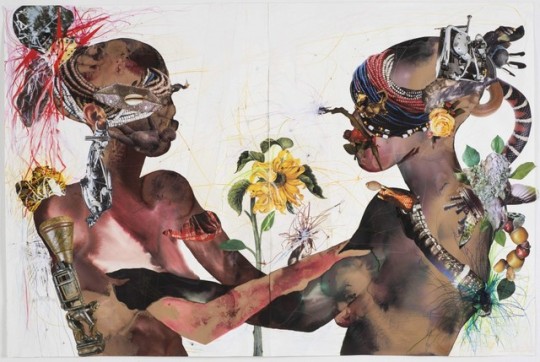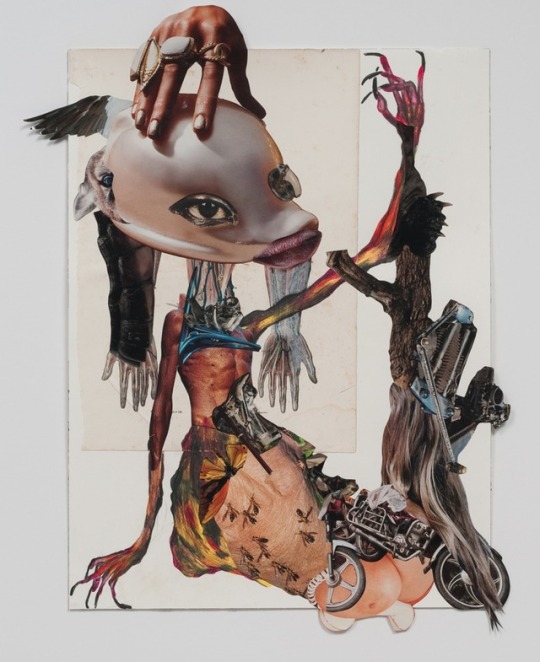Blog created by Carolyn van Artsdalen for Revolting Bodies with Professor Majida Kargbo
Don't wanna be here? Send us removal request.
Video
youtube
In this music video, FKA twigs is depicted bound by her hair. The music video expands on ideas of women’s sexuality, romantic relationships, and a black woman’s relationship to her hair. While not explicitly afrofuturistic, the music video uses futuristic imagery and imagines the black femme body as escaping from its current confines.
1 note
·
View note
Video
vimeo
AFRONAUTS by Ghanian director Nuotama Bodomo envisions the 1969 moon landing as a race between the Zambia Space Academy and the United States to be the first to land on its surface.
0 notes
Photo

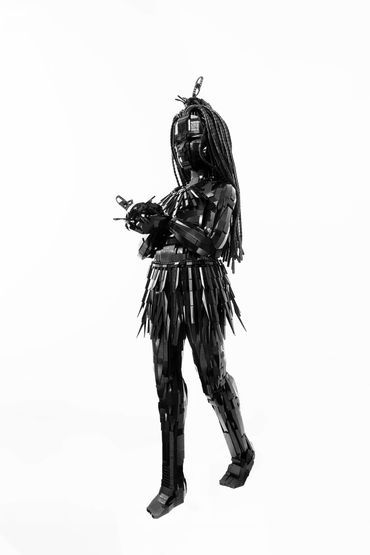


Building Black Civilizations: Sculptures inspired by the Medieval Kingdoms of West Africa
“Building Black Civilizations is the work of Ekow Nimako a Toronoto-based LEGO artist who crafts futuristic and whimsical sculptures."
“Ekow Nimako is a Toronto-based, internationally exhibiting LEGO artist who crafts futuristic and whimsical sculptures from the iconic medium. Rooted in his childhood hobby and intrinsic creativity, Nimako’s formal arts education and background as a lifelong multidisciplinary artist inform his process and signature aesthetic.
His fluid building style, coupled with the Afrofuturistic themes of his work, beautifully transcend the geometric medium to embody organic and fantastical silhouettes. “
Keep reading here
[SuperheroesInColor faceb / instag / twitter / tumblr / pinterest / support ]
4K notes
·
View notes
Photo
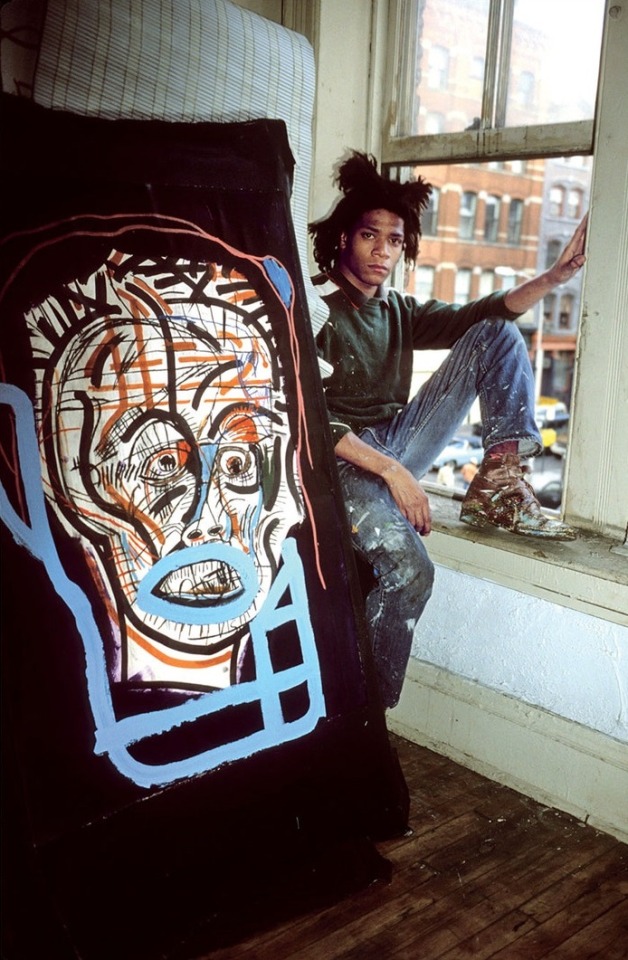


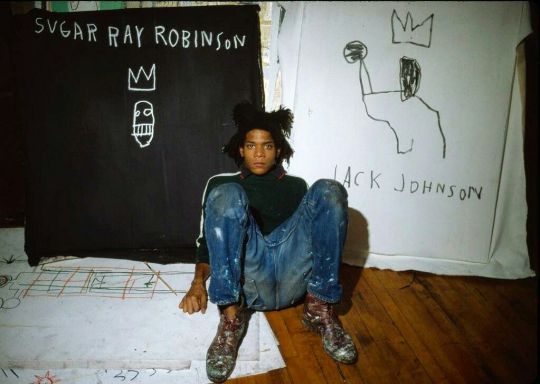
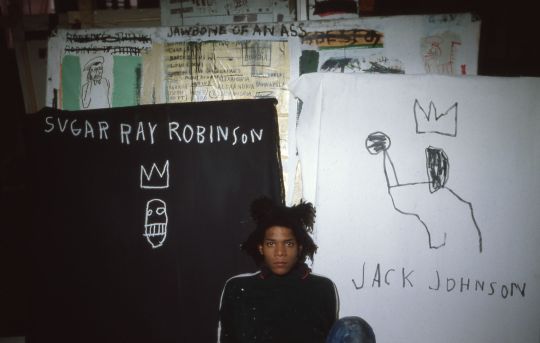
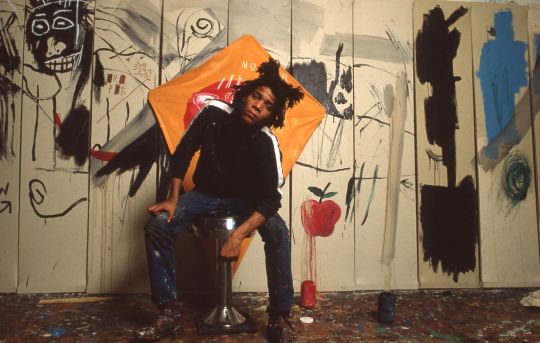

Jean-Michel Basquiat photographed by Gianfranco Gorgoni in his Crosby Street studio, 1982.
31K notes
·
View notes
Text
Afrofuturism Reading List (starting point)
Patternmaster by Octavia E. Butler: The first of Octavia Butler’s Patternist series to be published, Patternmaster places readers to a distant future where the world is ruled by oppressive telepaths. The result of generations of selective breeding, the clairvoyant tyrants use their power to enslave those who lack psychic abilities. Throughout the pages of Butler’s narrative, the telepaths simultaneously make the lives of “mutes” and “clayarks” (those who lack telepathy) difficult and cause dissension amongst the Housemasters, the government officials who rule the world with greedy hearts and iron fists. A tale of political and familial division, human cruelty, and resilience, Patternmaster is a haunting critique of capitalism, colonization, and exploitation. (link to purchase: https://bookshop.org/books/patternmaster/9781538751466)
This Planet is Doomed: The Science Fiction Poetry of Sun Ra by Sun Ra: The poetry of Afrofuturist and jazz legend Sun Ra is undeniably cosmic. Comprised of galactic visions and futuristic musings, the luminescence of each stanza is infused with stardust and an ancient wisdom that examines the complexity of the cosmos and humanity. Much like his musical compositions, Sun Ra’s poems thread together mythology, mysticism, and sci-fi, offering his audience a unique glimpse into the mind of a visionary. This Planet is Doomed volleys between retrospection, humor, and joy. The prophetic urgency of his work transcends time. The worlds that his poems conjure will leave you in awe.(link to purchase: https://www.abebooks.com/Planet-Doomed-Ra-Sun-Kicks-Books/30856847716/bd?cm_mmc=ggl-_-US_Shopp_Trade-_-product_id=COM9780965977715USED-_-keyword=&gclid=Cj0KCQjwna2FBhDPARIsACAEc_X0OSj9D4DQwMnk169bLJI45HG4Y5k_Z2OzMBAAvqELjWOvy1e5mHIaAlcCEALw_wcB)
Speculative Blackness: The Future of Race in Science Fiction by Andre M. Carrington: André M. Carrington’s Speculative Blackness surveys the way race is depicted in fantasy, sci-fi, and dystopian narratives and how fictive imaginings of Black identity impact contemporary culture and communities. Throughout this inarguably timely book, Carrington grapples with what these genres mean to Black Americans and their ability to shape the future in an empowering way. Whether analyzing the way race is handled in Marvel comics or the implications of Star Trek: Deep Space Nine’s Benjamin Sisko, Speculative Blackness is an accessible and academic meditation on the limitless potential of Black storytelling.(link to purchase: https://bookshop.org/books/speculative-blackness-the-future-of-race-in-science-fiction-9780816678969/9780816678969)
An Unkindness of Ghosts by Rivers Solomon: In this debut, Solomon takes the classic “generation ship” trope in a new direction, and does it with skill and verve. Aster, the primary narrator, is a self-taught healer onboard the enormous spaceship Matilda, which has been traveling in search of a new home planet for many generations. Instead of creating a new society and culture, humanity has fallen back on its worst history. The upper decks are landscaped, lush, beautiful, and populated entirely by white people, while the lower decks are populated by the darker-skinned inhabitants of the ship: enslaved, rationed, and patrolled and abused by armed guards. Ruthless violence keeps them working for the upper-deckers, and a religious dictatorship enforces class and race order across levels. Aster, a lower-decker, doesn’t have any plans to be a revolutionary. But when her friend Giselle points out a coded message in Aster’s dead mother’s diaries, everything begins to shift. (link to purchase: https://sistahscifi.com/collections/litbooks/products/unkindness-of-ghosts-book-by-rivers-solomon)
Some Black-Owned Bookstores to support (all of the links above are black-owned with the exception of abebooks):
https://sistahscifi.com/
https://www.missreadbooks.org/
https://aalbc.com/
http://www.thelitbar.com/
7 notes
·
View notes
Photo










Space Is The Place (John Coney, 1974)
2K notes
·
View notes
Photo

Sun Ra, Space is the Place (USA, 1974 dir: John Coney).
2K notes
·
View notes
Video
youtube
Released in 1974, Space is the Place is a afrofuturist film by musician Sun Ra. In the 85 minute film, Ra is shown on a quest with the Overseer, “ an incarnation of evil in the Black community who poses himself to be a community leader and a man of charity, but who, in fact, is a tool of the white power structure.” Some posit that Space is the Place is Ra’s response to the Black Panther Party for Self Defense and is an extension of his performative struggle for envisioning a black future. Ra proposes that “the band’s use of technology and music” will liberate the people by changing black consciousness.
Plot:
Sun Ra, who has been reported lost since his European tour in June 1969, lands on a new planet in outer space with his crew, known as "the Arkestra", and decides to settle African Americans on this planet. The medium of transportation he chooses for this resettlement is music. He travels back in time and returns to the Chicago strip club where he used to play piano with the name "Sonny Ray" in 1943, where he confronts the Overseer (Ray Johnson), a pimp-overlord, and they agree on a game of cards for the fate of the Black race.
In present time (the early 1970s), Ra disembarks from his spaceship in Oakland and tries to spread word of his plans. He meets with young African Americans at an Oakland youth centre and opens an "Outer Space Employment Agency" to recruit people eager to move to the planet. He also agrees with Jimmy Fey (Christopher Brooks) — an employee of the Overseer — to arrange radio interviews, a record album, and eventually a concert that will help him dictate his message.
As the card game between Ra and the Overseer is played, and it becomes clear that the Overseer is winning, Ra's plans to recruit local black youth for his new utopian space colony suffer setbacks. Many of them are suspicious of Ra, accusing him of faking his outer-spatial origin as a gimmick to boost his record sales. He is kidnapped by a team of white NASA scientists who threaten him with violence, desperate to learn the secrets to his space-travel technology. As Ra's concert rapidly approaches, he is saved by three local teenagers, who escort him to the music hall just in time.
At the concert, as the Arkestra play their signature free jazz, the NASA scientists appear and attempt to assassinate Ra with a pistol. One of the teenagers jumps in front of the bullet, saving Ra's life, and as he is bleeding out on the stage, Sun Ra waves his hand and the teenager, his friends, and Ra himself all disappear from the music hall. One by one, black people across Oakland vanish into thin air and reappear on Ra's spaceship.
Jimmy Fey resists leaving Earth on Ra's spaceship, but Ra doesn't let Fey leave; Ra takes Fey's "black parts" with him onto the spaceship, leaving his "white parts" behind on Earth. Fey, now acting white, leaves the Overseer, who loses the duel. As Ra's spaceship launches off into the cosmos and music begins playing, a montage implies that Earth is destroyed in its wake.
11 notes
·
View notes
Link
(Currently only available in the UK, but I will update this post once I find a way to stream it)
Description of the film:
The arc of black history shares an uncanny resemblance to the plot points of classic sci-fi including ‘alien’ abduction, enslavement and rebellion. It’s this unlikely relationship that provides the inspiration for Afrofuturism, the broad cultural trend that encompasses works by Jean-Michel Basquiat to Grace Jones, Solange Knowles and Sun Ra. In this film, we meet, see and hear from artists across three continents who each, in their own way, explore the Afrofuture to look at the horrors of the black past and imagine alternative futures.
The mysterious yet influential Detroit techno duo, Drexciya, take the Atlantic Ocean, a site of death and destruction during the African slave trade and reclaim it as a place of creation and beauty. Through a series of releases from the late 1990s through the early 2000s, they envisage the unborn children of enslaved pregnant women, thrown overboard during the Middle Passage to the Americas, adapting to breathe under water and thrive in a Black Atlantis. The mythos is vividly brought to life by the Drexciyan collaborator and graphic artist Abdul Qadim Haqq as a thriving, technological undersea world.
Visual artist Ellen Gallagher similarly transforms the violence of the ocean into rebirth and renewal. Her film Osedax, made with Edgar Cleijne, is an imaginative retelling of how the skeletal remains of dead whales sustain new life in the curious form of the bone-devouring worm of the title. Whereas for artist Hew Locke, as well as the ocean itself, it’s the Atlantic’s coastal fringes that inspire his world of bricolage phantoms, plucked from the ghost stories of a Guyanese childhood.
The Afrofuture is perhaps most commonly imagined through the rubric of outer space, thanks in no small part to avant-garde jazz musician and poet Sun Ra.
Born in the southern US in the early 20th century, Ra underwent an interplanetary conversion, claiming to have been teleported to Saturn. As with funk pioneer, George Clinton, who describes a similar close encounter with extraterrestrials, Ra’s identification with an alien presence can be read as more than simple escapism. It’s also a biting satire on the alienating experience of being black in America. For Ra, space is also an alternate destiny for black people, as the title of his 1973 Afrofuturist feature film Space is the Place insists.
Reaching beyond these fictional ‘Afronauts’ is the conceptual artist Tavares Strachan. His performance piece, Star City, Training in Six Parts, sees Strachan visit the famous Russian space centre to undergo the same rigorous – and often tortuous – training of the Cosmonauts. Strachan likens one of the exercises, which measures our capacity to withstand disorientation and gravitational stress, to his impoverished upbringing in The Bahamas.
The film concludes with an exploration of the idea of double consciousness. Coined in the early 20th century by WEB Du Bois, the influential African American sociologist, double-consciousness describes how black people in western societies see themselves twice over. Through their lived experience but also how they’re perceived within a dominant white culture.
Curator and writer Ekow Eshun traces uses of the idea through Ralph Ellison’s lauded mid-20th-century novel Invisible Man, and painter Kerry James Marshall’s image of the same title, right up to the Black Lives Matter movement. Predicated upon recordings of anti-black violence often captured through digital tech, Eshun argues these ‘expose’ a double consciousness at work, the world as experienced and seen through black eyes, laid bare for all to witness.
Other artists and commentators featured in the programme include Nuotama Frances Bodomo, Aria Dean, Ayesha Hameed, Kiluanji Kia Henda, Shabaka Hutchings, Elvira Dyangani Ose, Cauleen Smith and Greg Tate
8 notes
·
View notes
Photo


Afrofuturism: Why black science fiction ‘can’t be ignored’
One study of the top 100 highest-grossing films in the US showed that just eight of those 100 movies had a non-white protagonist, as of 2014.
Six of those eight were Will Smith, according to diversity-focused book publisher Lee and Low Books.
The long-term exclusion of people of colour from science fiction offers up an interesting paradox.
How can a genre that imagines a future of infinite possibilities be seemingly unable to imagine a future where black people exist - or at least have any relevance?
Herein lies the power (and importance) of afrofuturism, and while you may not have heard of the term, there’s a good chance you’ve been introduced to it already.
Afrofuturism is perhaps best summed up by the queen of contemporary afrofuturism herself — Janelle Monae.
Her futuristic music videos and radical aesthetic (she even calls her fans “fAndroids”) are seen by some as a key force for pushing afrofuturism into the mainstream.
“Afrofuturism is me, us… is black people seeing ourselves in the future,” she explains in a 30-second video clip for Spotify.
It is no surprise then that Janelle cites the movement as the inspiration for her new narrative film, Dirty Computer: Emotion Picture, a visual accompaniment to her latest album (which is currently trending on YouTube).
6K notes
·
View notes
Link
The Afropunk festival was first conceived in 2005 by James Spooner and Matthew Morgan following the creation of the 2003 documentary of the same name. As described on their wiki, “the festival originally sought to provide black people an opportunity to build community within the predominantly white punk subculture and to provide a stage for black alternative performers that were not acknowledged in the mainstream and stood outside hip hop, R&B, soul, etc.” While music plays a major role in the festival, Afropunk in its newest iteration will feature spaces such as “ideaville”, “hair & beauty village”, and “activism row”. As with any music festival, the music is only a starting point for the culture that surrounds the event. The intention of Afropunk is to create a safe space for the celebration of blackness and to “inspire, cry and shout, and to heal and motivate one another”. Given the political nature of punk, the festival has experienced criticism from its attendees claiming that the festival was pandering to a white audience and its corporate leanings.
1 note
·
View note
Photo
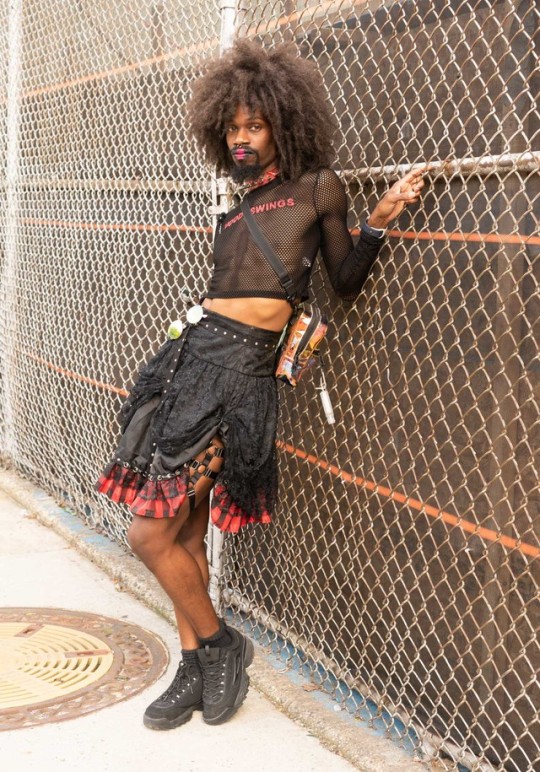
Otis, 29
“My style is inspired by the bond I have with my friends. Our friendship has grown from each of us learning how to own who we are— unique, out-of-the-box, androgynous, bold, forward-thinking, sexually-liberated creative artists. This year the theme for our first day at Afropunk was ‘Steampunk with a Gothic Twist’. Afropunk is one of the few times a year that we get to be around such a large group of open-minded people of all colors. I love that I get to celebrate being African American, skinny, gay, and fashion forward. Afropunk also makes us feel like the shining stars we all already are. We hope we remind everyone else that they are too!”
Aug 24, 2019 ∙ Afropunk
1K notes
·
View notes
Photo

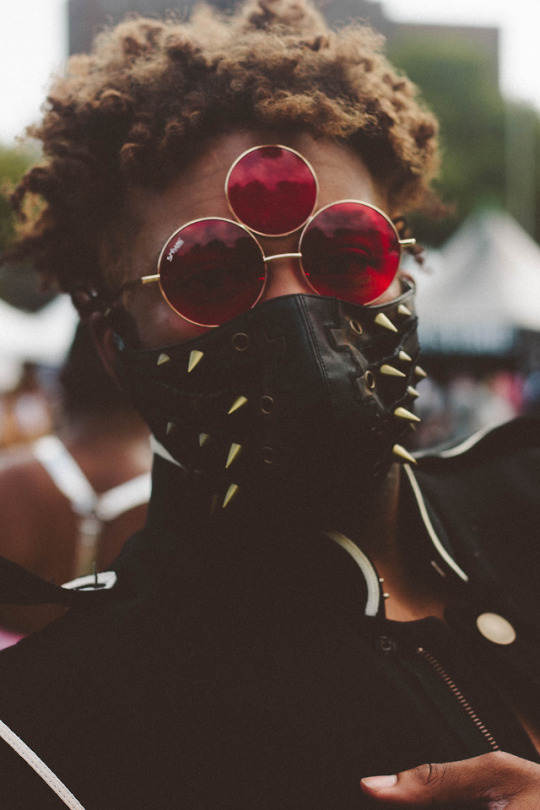


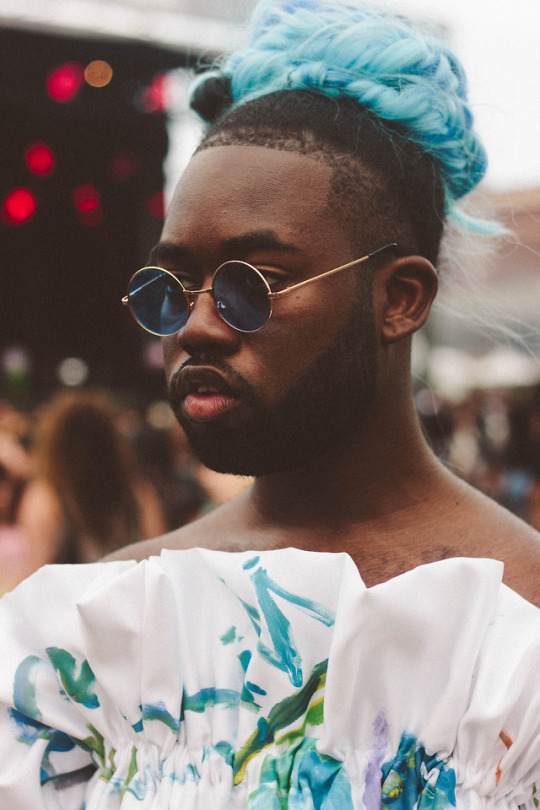


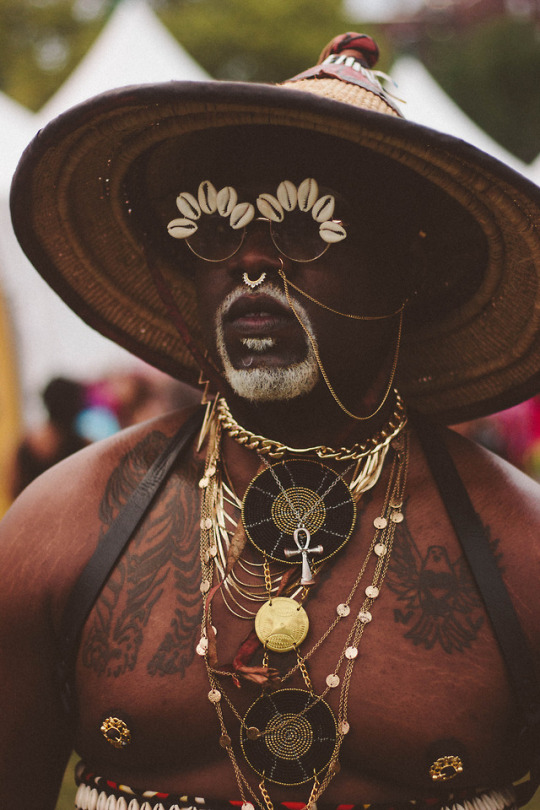
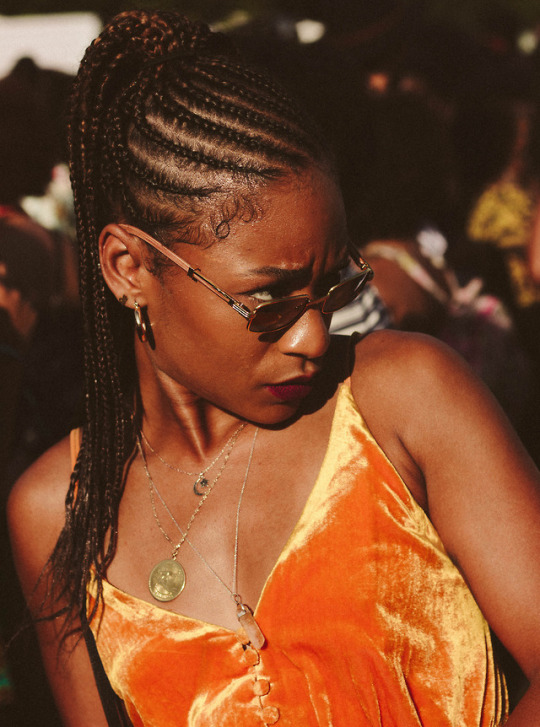
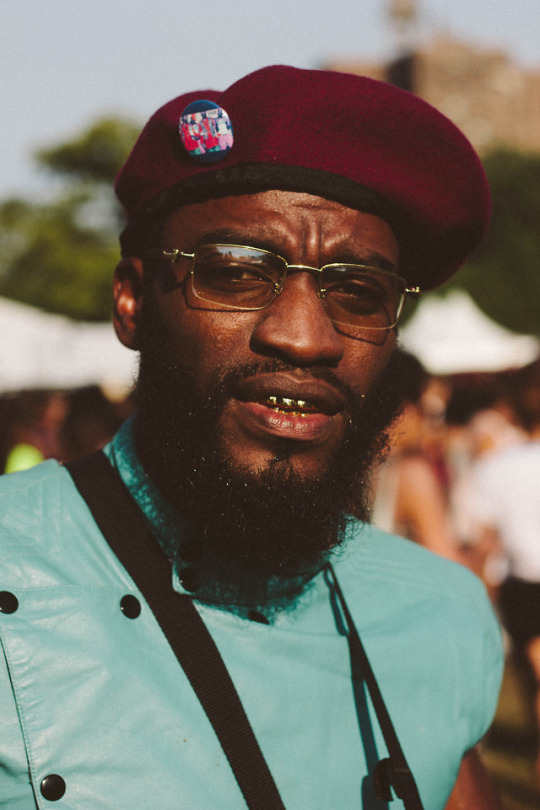
I love my people….
Photographer: @forsleepersonly
IG:WrongQuestion
Thank you…
3K notes
·
View notes
